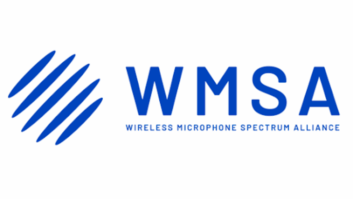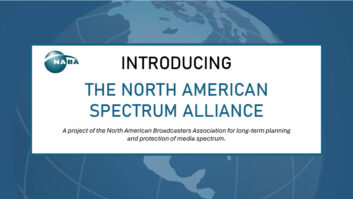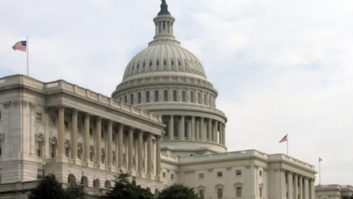Some stakeholders are weighing in on the recently-released U.S. National Spectrum Strategy, which seeks to modernize spectrum policy and identify spectrum that can be better utilized.
The National Telecommunications and Information Administration (NTIA), in collaboration with the Federal Communications Commission, released the strategy last month, which calls for a study of various wireless technologies.
NTIA says the National Spectrum Strategy will advance U.S. leadership globally while also providing Americans with the best services that advanced wireless technology offers. “These technologies will improve not only consumer wireless networks but also services in vital economic sectors such as aviation, transportation, manufacturing, energy and space,” NTIA said in a release.
The new spectrum strategy, which creates an Interagency Spectrum Advisory Council to advise NTIA on spectrum policy matters, identified 2,786 megahertz of spectrum across five spectrum bands for in-depth study to determine suitability for potential new uses.
The spectrum target includes more than 1,600 megahertz of midband spectrum — a frequency range in high demand by the wireless industry — for next-generation services, according to NITA.
Wireless mic maker Shure says it appreciates the work by NTIA and the FCC. Shure says it was the only company that provided feedback on the needs of wireless audio throughout the process.
Shure outlined four key points in its feedback for the U.S. National Spectrum Strategy, mentioning the Program Making & Special Events (PMSE), which includes wireless microphones for broadcast and In-Ear Monitor systems.
The company says continued access to spectrum around 1 GHz for audio PSME is critical for its long-term future.
“We want to ensure that spectrum needs are considered so that the right support can be provided for events and content creation, which are vital to the economy,” said Shure’s Global Head of Spectrum & Regulatory Affairs Prakash Moorut. “The U.S. needs to continue to be a leader on spectrum sharing, which is allowing so many applications like PMSE to flourish.”
Shure, which supports spectrum sharing, says “potential future technology for audio PMSE cannot completely overcome the lack of spectrum.”
Meanwhile, SBE President Ted Hand says the group is pleased with the NTIA “taking a proactive approach to spectrum strategy and putting in place a plan that addresses the importance of this valuable resource to maintain a competitive edge” in the wireless industry for the United States.
“While the current plan has a minimal impact on the broadcast industry, we understand that this is the first stage of a long-term spectrum plan and stand ready to partner with the NTIA, FCC, and other organizations to capitalize on the SBE’s valuable frequency coordination knowledge to ensure success at every step,” Hand told Radio World in an email.
The National Association of Broadcasters has also been an active participant in the discussion on spectrum strategy. “We are pleased to see that the resulting strategy is principally focused on improving the efficiency of federal spectrum use and does not seek to target existing commercial spectrum use,” NAB said in a statement released to Radio World.
NAB says it is still considering whether to comment on the implementation of the strategy.
“We hope this new council will regularly seek advice and input from the private sector, including the broadcast industry, as it considers policies that could impact commercial spectrum use,” NAB said.
Following publication of the Spectrum Strategy, NTIA will work with the FCC and other federal agencies to prepare and publish an Implementation Plan within 120 days.







